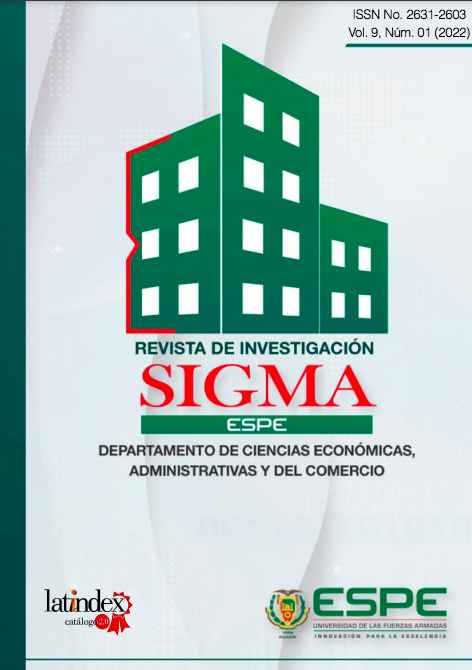Patrimonio Cultural una alternativa para la dinamización de la economía: estudio de caso Ecuador
Main Article Content
Abstract
Al año 2021, en países Latinoamericanos como el Ecuador, se han dinamizado actividades económicas diversas y/o diferentes a las realizadas de forma tradicional. Se vienen ejecutando acciones referidas a la creación de emprendimientos culturales relacionados con la conservación, preservación, restauración y difusión del Patrimonio Cultural Material e Inmaterial; a fin de entregar un servicio encaminado a la satisfacción del turista local y extranjero, para alcanzar un pleno deleite al vivenciar las maravillas patrimoniales del País. Partiendo del reconocimiento de que los bienes patrimoniales, se han convertido en el medio para la generación de recursos económicos para muchas familias, en la actualidad es una vertiente de ingresos que va en crecimiento en la participación del PIB a nivel nacional. Por lo que, la finalidad del presente estudio es reconocer el potencial que tiene el Patrimonio Cultural en el Ecuador, como insumo para generar sistemas económicos dinámicos, modernos y versátiles. Para el efecto se ha realizado un proceso de investigación exploratorio – descriptivo reflexivo que parte del análisis documental de temas específicos como Patrimonio Cultural, su caracterización y relación con la Economía Naranja, seguido del análisis estadístico del número de bienes patrimoniales materiales e inmateriales que posee el País, a fin de concluir con el reconocimiento de actividades que generen ingresos económicos en el mundo de la cultura. Determinándose de esa manera una forma de transforma el conocimiento de un bien patrimonial o un servicio cultural en un beneficio económico y el desarrollo de la cultura.
Palabras clave: Patrimonio Cultural Material; Patrimonio Cultural Inmaterial; Bienes Patrimoniales Muebles e Inmuebles; Turismo Cultural; Economía Naranja.
Abstract
By 2021, in Latin American countries such as Ecuador, diverse and / or di erent economic activities from those carried out in a traditional way have been boosted. Actions have been carried out regarding the creation of cultural enterprises related to the conservation, preservation, restoration and dissemination of the Tangible and Intangible Cultural Heritage; in order to deliver a service aimed at the satisfaction of local and foreign tourists, to achieve full delight in experiencing the patrimonial wonders of the country. Starting from the recog- nition that heritage assets have become the means for the generation of economic resources for many families, at present it is a source of income that is growing in the participation of GDP at the national level. Therefore, the purpose of this study is to recognize the potential that Cultural Heritage has in Ecuador, as an input to generate dynamic, modern and versatile economic systems. For this purpose, an exploratory-descriptive and refective research process has been carried out that starts from the documentary analysis of specific topics such as Cultural Heritage, its characterization and relationship with the Orange Economy, followed by the statistical analysis of the number of tangible and intangible heritage assets that the country, in order to conclude with the recognition of activities that generate economic income in the world of culture. Determining in this way a way to transform the knowledge of a heritage asset or a cultural service into an economic benefit and the development of culture.
Key words: Material Cultural Heritage; Intangible Cultural Heritage; Furniture and Real Estate Heritage; Cultural Tourism; Orange Economy.
Article Details

This work is licensed under a Creative Commons Attribution 4.0 International License.
- Los autores/as conservan los derechos de autor y conceden el derecho de la primera publicación a la revista, con el trabajo registrado con la licencia de atribución de Creative Commons, que permite a terceros utilizar lo publicado siempre que mencionen la autoría del trabajo y a la primera publicación en esta revista.

